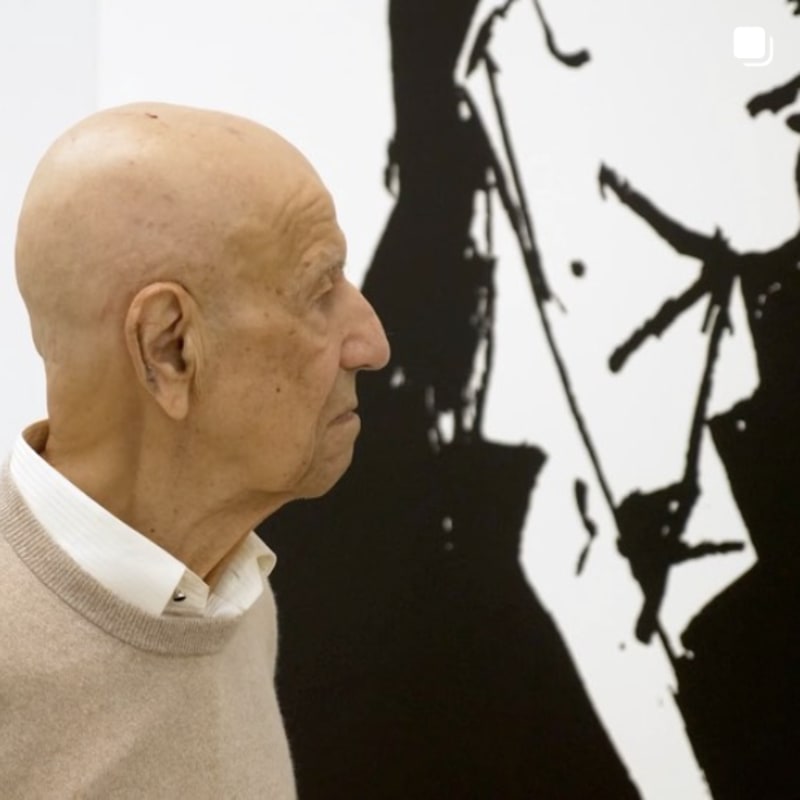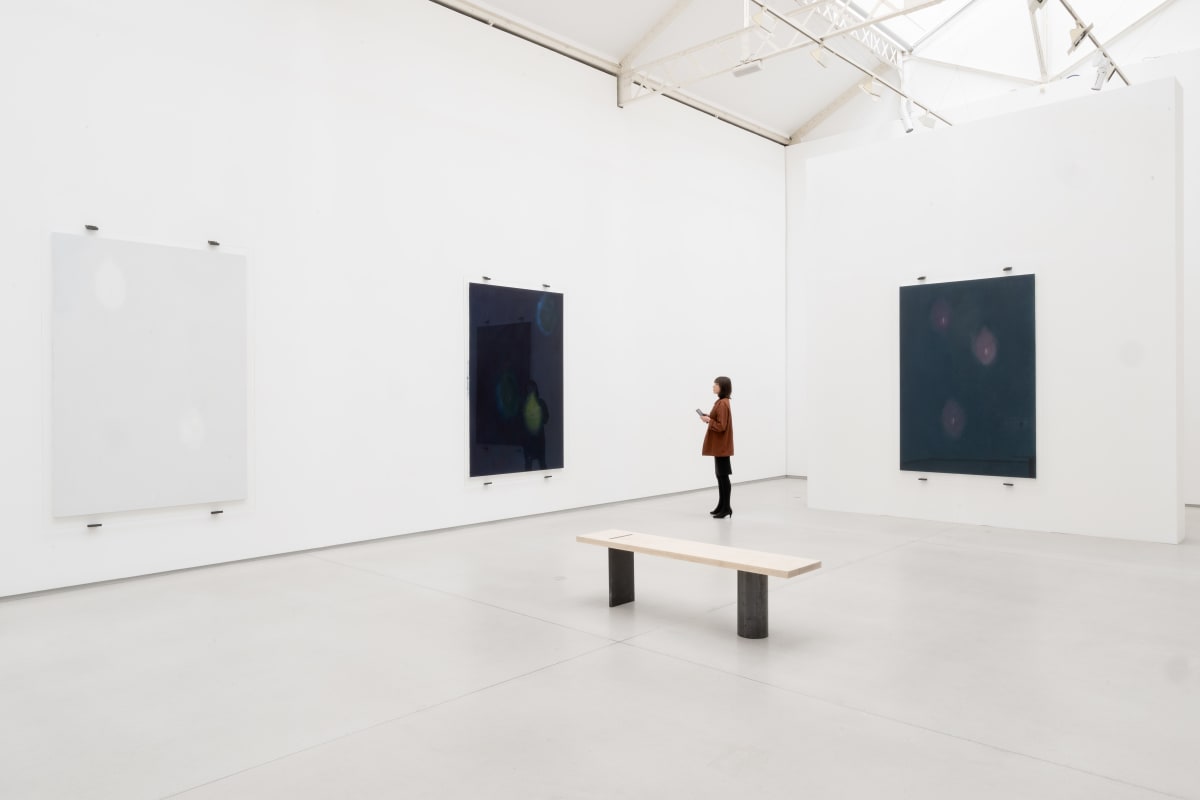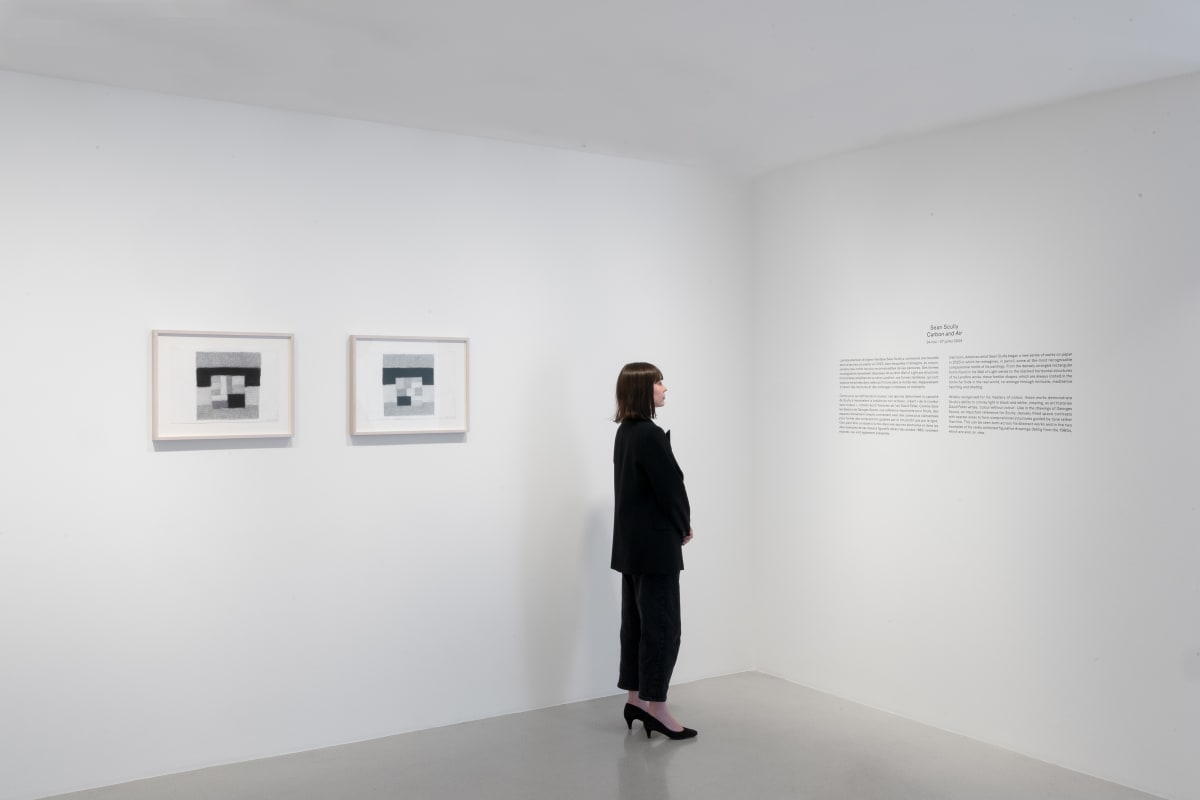

Lydia Okumura Volume '84
Overview
The five seminal site-specific installations on view in Ropac’s Ely Room gallery, which were originally realised for her major solo exhibition at the Museu de Arte Moderna in São Paulo in 1984, highlight a watershed moment in Okumura’s career.
A Solo Installation by Minimalist Sculptor Lydia Okumura
Recreated by the Artist in Situ, Lydia Okumura’s Works from the Seminal Exhibition of 1984 at the Museu de Arte Moderna, São Paulo
‘I do not try to make space something it is not, but to reaffirm it and to expand its possibilities’ - Lydia Okumura
Galerie Thaddaeus Ropac London is delighted to present Volume '84, a solo installation by the Brazilian- Japanese, New York-based Minimalist sculptor and conceptual artist Lydia Okumura, whose work broke the artistic boundaries of the 1970s, expanding the tradition of the Brazilian geometric avant-garde with her multi-dimensional abstract environments.
The five seminal site-specific installations on view in Ropac’s Ely Room gallery, which were originally realised for her major solo exhibition at the Museu de Arte Moderna in São Paulo in 1984, highlight a watershed moment in Okumura’s career. Exemplifying the artist’s sustained investigation into spatial possibilities and volume, Okumura’s geometric steel mesh cubes – also shown in the artist’s 2016-2018 touring US retrospective – and White Volume, a three-dimensional floor installation constructed from fabric and wire, will be newly realised. Following Ropac’s first presentation of Okumura’s work in its group exhibition, Land of Lads, Land of Lashes in June 2018, Volume '84 offers visitors an opportunity to re-evaluate the complex multi-dimensionality of five key sculptures from a pivotal year in her artistic trajectory.
For almost fifty years, Lydia Okumura has transformed space through geometric abstraction, her work blurring the boundaries between illusion and reality and provoking a reassessment of the conventional art-object experience. She was the first Brazilian artist to have their work included in the permanent collection of the Metropolitan Museum of Art, New York in the 1970s. Her large-scale often site-specific geometric compositions, largely realised using acrylic paint, cotton string, painted aluminium sheets, fabric and wire, actively challenge our perception of the spatial world. Projected into three-dimensional space from walls and floors, they investigate the optical interplay between two- and three-dimensional forms.
Volume '84
In 1984, Ilsa Leal Ferreira, Director of the Museu de Arte Moderna (MAM) in São Paulo, invited Okumura to stage a solo exhibition at the Museu de Arte Moderna in the wake of her burgeoning successes in Japan, Bogotá, Brazil and New York. The invitation was impromptu, allowing Okumura just 30 days to create a sculptural vision for the entire museum. “I went home pondering the invitation’s condition as impossible, but my father said: ‘If nobody would do, why don’t you do it’.” In the month leading up to the exhibition, Okumura worked day and night with a local metal workshop to create 47 wall and floor installations, three-dimensional pieces made out of steel wires, wire mesh screens, wood panelling, and stretch fabric.
In this landmark exhibition, Okumura showed an astute vision for the modernist architectural quality of the museum, filling it with works that focused on abstract volume, spatial rhythm and negative space. In contrast to her previous painted installations from the 1970s, her sculptural works from 1984 marked an evolution in Okumura’s colour and material sensibility that resonated aesthetically with progressive post-modern design. The steel mesh cubes, for example, along with several other wire mesh and steel wire pieces, signalled a new material realm for Okumura: until then, the artist had not worked with these industrial raw materials. In this new series of works, Okumura also experimented with scale, perception, and form, creating radical new shapes and environments in the gallery space. The exhibition included Labyrinth – her largest painted wire sculpture to date, and the first that visitors could enter and move within – and White Volume, a grounded floor composition with a fluid, undulating form that intrinsically challenges perception.
The 1984 retrospective was a great success: many of the works were acquired on the spot by Brazilian collectors engaged with the museum, and by famed fellow artists such as Tomie Ohtake and Sergio Camargo. But the most memorable experience for Okumura was to see the exhibition through the eyes of a group of children working at the park where they were paid to watch parked cars she had spotted pressing their faces against the museum’s glass front excited to see her working on the sculptures:
“In watching the barefoot kids who I let in the museum, I realised that I make art for people to see, simple as that. (...) The minimal, the geometric, the environmental are all strategies. The artist chooses his/her form of expression and seeks how best to express each idea. I think conceptual art questions the apathy of the merely decorative, and from a repudiation of the values about which a stand had to be taken. An idea, a truth, a piece of knowledge begets a sentence; energy requires a form of expression, and it forms a language. The artist can help with the observation of inner things, in addition to the physical, the psychological, the thoughts. The work of art allows a needed pause for this (self)reflection. Geometry is an intelligent way to express the concept of multi- dimensionality, an aspect of the truth of life.”
While her male contemporaries rose to international prominence, Okumura was not afforded the same visibility and institutional support following her exhibition in 1984. Only now, in today’s shifting political and cultural landscape, is her ground-breaking work receiving widespread critical acclaim and greater recognition.
ABOUT THE ARTIST
Born in 1948 to Japanese parents in São Paulo, Brazil, Lydia Okumura’s interest in art was awakened by her father, a calligrapher. Before relocating to New York in 1974, Okumura studied at the FAAP School of Visual Arts in São Paulo and she staged her first solo exhibition in 1968 at Galerie Veranda. During these formative early years in São Paulo, she responded to the conceptual art of the time. The 1970 Tokyo Biennial, which exhibited work by contemporary European and American conceptual artists – including Carl Andre, Daniel Buren and Sol LeWitt – served as a great source of inspiration, as did the work of Brazilian post neo-concrete artists Cildo Meireles and Artur Barrio. By 1971, Okumura had begun experimenting with her own abstract visual language based on line, form and space. In 1973, she had her break-through at the São Paulo Biennial with Points of View, an abstract environment created collectively with her peers from Equipe3, Francisco Iñarra and Genilson Soares.
During the 1977 Biennial, she met American art critic Gregory Battcock, who helped facilitate her immigration to the US where she has lived and worked since 1974 as a student at the Pratt Graphics Center. In New York, Okumura began developing her 'Situations', site-specific geometric installations composed from colour fields and string that project into space from the walls and floor, exploring the optical interplay between two- and three- dimensional structures. Okumura collaborated with Sol LeWitt during her early years in New York, and her work can be seen as an intriguing parallel to that of the American Minimalist Fred Sandback.
In the decades following her move to New York, Okumura has participated in group exhibitions in Brazil, Japan and the US. In the last two years she has had a touring US retrospective, shown at the UB Art Galleries, Buffalo in 2016; at The Mary Elizabeth Dee Shaw Gallery at Weber State University in Utah in 2017; and the Scottsdale Museum of Contemporary Art (SMOCA), Arizona in 2018. Okumura’s first UK group show, Land of Lads, Land of Lashes – Rosemarie Castoro, Lydia Okumura, Wanda Czelkowska, was curated by Anke Kempkes at Galerie Thaddaeus Ropac, London last year; this exhibition was followed by Lydia Okumura: Situation I & II at Foksal Gallery Foundation Warsaw and Signum Foundation, Lodz. Okumura will participate in the upcoming group exhibition, Negative Space. Trajectories of Sculpture, curated by Peter Weibel, Daria Mille and Anett Holzheid at the ZKM Karlsruhe from 6 April – 8 August 2019.












































































































































































